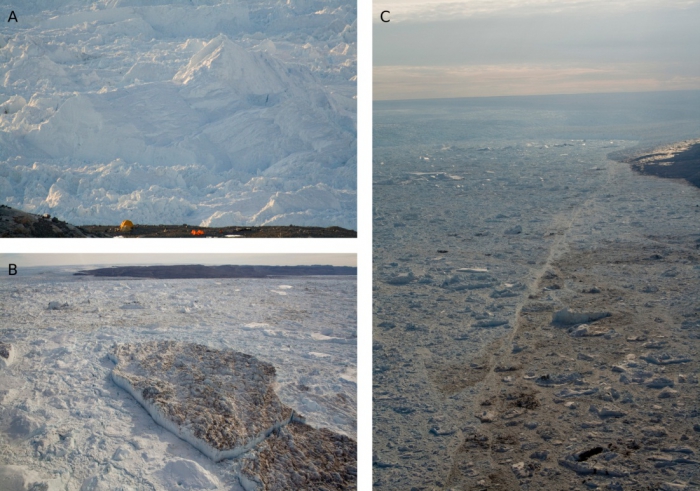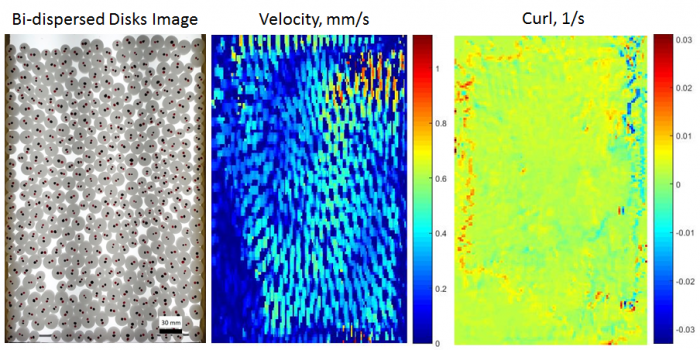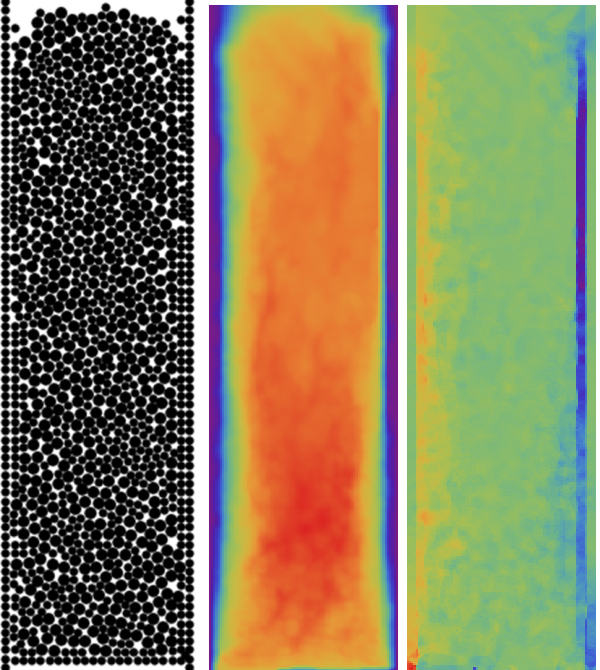By: Jason Amundson, University of Alaska Southeast; Justin Burton, Emory University; and Michael Dennin, University of California Irvine
Recent and on-going retreat of many Northern hemisphere marine-terminating glaciers is contributing significantly to sea level rise. It is driven by poorly understood processes occurring at the ice-ocean interface, such as subglacial discharge into the ocean, turbulent plume dynamics, submarine melting, and iceberg calving. An interdisciplinary project, led by Jason Amundson (University of Alaska Southeast), Justin Burton (Emory University), and Michael Dennin (University of California Irvine) and supported by NSF's Physical Oceanography and Arctic Natural Sciences programs seeks to provide unique data and improved models for projecting contributions to future sea level rise.
The response of tidewater glaciers (i.e., marine-terminating glaciers) to climate change is highly complex and strongly affected by mass losses that occur at the ice-ocean interface via submarine melting and iceberg calving. These processes are poorly constrained, and thus limit our ability to predict the future evolution of tidewater glaciers. In recent years, several studies have provided compelling evidence that ice mélange (Figure 1), a granular material consisting of icebergs and brash ice found in some proglacial fjords, can provide sufficient resistance to a glacier terminus to inhibit calving activity and thereby affect glacier stability. Preliminary theoretical and laboratory work has shown that large resistive forces are not necessary to prevent even the most energetic calving events, i.e., those that involve the calving and immediate capsize of full-glacier thickness icebergs which release ~1014 joules of potential energy within a few minutes. Beyond that, however, very little is known about the physics of ice mélange or the potential stresses associated with jamming of ice mélange, a common and important phenomenon that occurs in granular materials. Consequently, we are currently unable to assess ice mélange's role within the ice-ocean system.

As a first step toward arriving at a rheological description of ice mélange, we are focusing our work on jamming that occurs as a result of iceberg-iceberg, iceberg-bedrock, and iceberg-glacier collisions. In densely-packed granular materials, force chains can develop that support stresses that are surprisingly large and focused in unexpected directions. This leads to a range of phenomena, including arching in grain silos and jammed flow in hoppers. When a material jams, particles within the material are not free to flow past each other. Jamming and unjamming of a material, which can occur intermittently, will strongly affect the bulk behavior of the system. We expect this to also be the case for ice mélange.

Ice mélange is a challenging geophysical material to study in the field; it is inaccessible except by helicopter and it is unpredictable. Large calving events greatly perturb the proglacial environment and cause icebergs within the ice mélange to rapidly accelerate and capsize. Field observations are therefore primarily restricted to velocity fields (Figure 2) and iceberg size distributions derived from terrestrial radar data and satellite imagery. We are using these observations to guide development of and provide benchmarks for complementary numerical models and laboratory experiments.

In the laboratory experiments we push a collection of plastic blocks, which have a density close to that of ice, with a model terminus. We are able to measure the horizontal velocity field of the experiments (Figure 3), and also the force exerted against the terminus and any out-of-plane displacement of the blocks. The advantage to using laboratory experiments is that we can control and test everything and, for example, determine the effect that iceberg shape and size distribution have on the flow of the material. At the same time, we are using numerical experiments (Figure 4) to provide a bridge between the laboratory experiments and field observations. In the experiments we are able to test simplified physical descriptions of ice mélange, with the ultimate goal of developing a model of ice mélange that can be coupled to long length- and time-scale glacier models.

By bringing together ideas in condensed matter physics to study large-scale glaciological processes, our work will shed new light on processes affecting polar regions. This work also provides us with an opportunity to test whether theories of jamming developed at the microscale are also applicable for granular materials comprised of clasts that are 10's of 100's meters in all three spatial dimensions.
